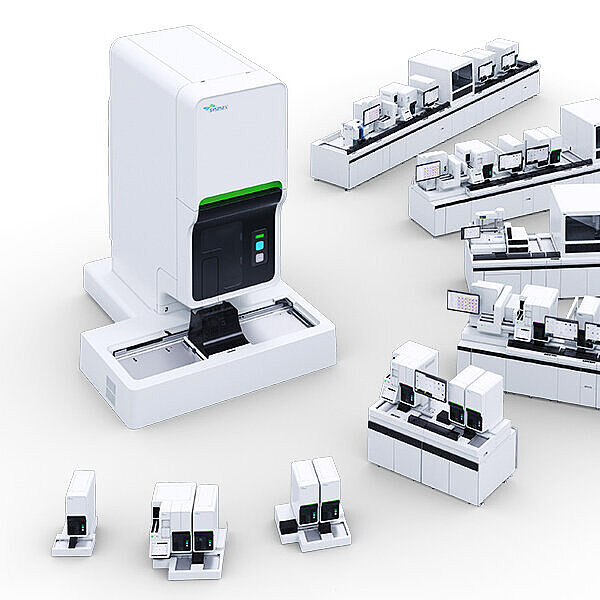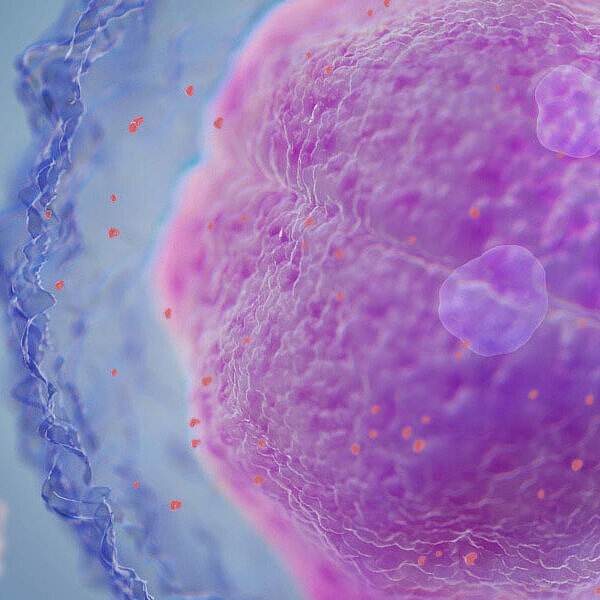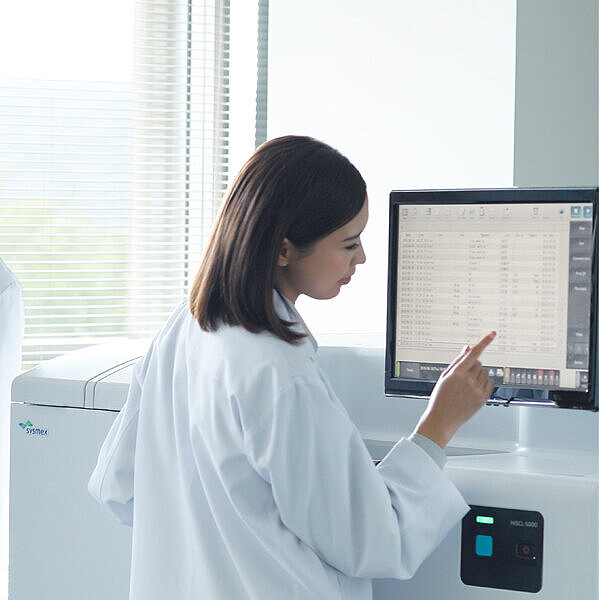Tracing iron deficiency
XTRA ARTICLE EDITION 2/2019
The parameters Hypo-He, RET-He and Delta-He are useful markers for the diagnosis of anaemia. Two perspectives from clinical and laboratory settings on using the parameters to monitor the supply of iron to bone marrow
Interview: Ramona El Fatmi
‘A new cell-based biomarker’
Delta-He is a useful parameter – not only for iron deficiency, explains Adjunct Professor Dr Mathias Zimmermann, who is a specialist in laboratory medicine and Head Physician of the Central Department for Laboratory Medicine at the DRK (German Red Cross) hospitals in Berlin.
Dr Zimmermann, what importance do you personally place on the reticulocyte haemoglobin equivalent?
RET-He is, in my view, a very good biomarker for the iron supply in erythropoiesis. It has taken on great importance in the diagnosis of iron metabolism and has become an established routine parameter. It gives clinicians a very good overview as to whether the patient currently has the early stages of an iron deficiency or not. This parameter is also highly standardised and can be measured round the clock very quickly and cost-effectively. This makes it a frequently requested parameter, especially in internal medicine wards, gynaecology and paediatrics, but also surgical wards that want to check before surgery if the patient has anaemia. You simply want to see if the bone marrow is currently working well in terms of erythropoiesis.
Delta-He is another parameter that is not as well-known as RET-He. What does this parameter tell you?
Delta-He is a new, cell-based biomarker that is established by measuring reticulocytes on the XN-Series. You have to go into a little more detail to explain its use: when bacteria enter our body and trigger inflammation, there are processes that have been going on for millions of years that are basically similar in all living creatures. There is a rise in certain cytokines, i.e. messenger substances of the immune system, such as interleukin-6. This first non-specific alarm signal then triggers various reactions resulting in an increase in hepcidin, an acute phase protein. The hepcidin ensures that transmembrane iron-export proteins are internalised from the cell surface.
This means that the iron is locked away in the cells and does not enter the blood stream again until the hepcidin falls. This is a protective mechanism of the body to withdraw iron that invading bacteria need for their growth. However, this also means that there is not enough iron for erythropoiesis. As a result, the haemoglobin content in the reticulocytes is lower and the Delta-He value turns to negative because the haemoglobin concentrations in the mature red blood cells exceed those of the young reticulocytes. Normally, it is the other way around. Once the infection has been fought off, hepcidin expression falls and the iron transporters return to the cell surface so that iron can be absorbed and is then also available for erythropoiesis – the reticulocyte filled with more haemoglobin (iron) becomes larger than the mature red blood cell and the Delta-He returns to positive.
And what is the importance of the Delta-He value in these circumstances?
Delta-He is the difference between the haemoglobin content of the newly-formed reticulocytes (RET-He) and the haemoglobin content of the mature red blood cells (RBC-He). The Delta-He value that is usually positive in healthy people, between + 2 pg and + 8 pg, turns negative within a few hours because there is an iron deficiency due to inflammation. If the Delta-He value suddenly switches to negative, you can suspect that the patient most likely has an acute phase reaction or maybe has developed sepsis. In the case of sepsis, the Delta-He can promptly switch to - 4 pg, - 6 pg or - 8 pg. With successful treatment, if the patient responds to the drugs and the infection (or inflammation) is blocked, the Delta-He can quickly tell you if the bone marrow is getting enough iron and it switches back to positive. In the case of iron deficiency anaemia, you would not expect the Delta-He value to be negative. As long as the inflammatory component is missing, the relationship between the haemoglobin concentrations of reticulocyte to red blood cell is not pathologically regulated and so the value is still positive. It is only when there is inflammation that the value becomes negative.
Does that mean that Delta-He could also play a role in monitoring?
Definitely. And you could easily combine the parameters Delta-He and RET-He in a diagnostic plot with RET-He on the y-axis and Delta-He on the x-axis. We divide this into nine fields and then you can see if the patient has an inflammatory disease, iron deficiency or thalassaemia, similar to the so-called ‘Thomas plot’.
How do you use the Delta-He in laboratory routine?
Our colleagues working in a clinical setting use RET-He as an established routine parameter. We still have to inform our colleagues about Delta-He with lectures or handouts. But I think it can become a very good addition or even a replacement for the classic acute phase parameters such as CRP (C-reactive protein) or PCT (procalcitonin) when sepsis is suspected if it is used in combination with other markers. We and other groups conducted studies where a range of the new cell-based haematological markers are combined with each other. We found that with Delta-He and other parameters, a systematic bacterial infection can be detected very early on as these parameters respond faster than CRP and PCT. In the future, this could provide a diagnostic benefit and the ability to see if the treatment is working or not.
Summary
- Delta-He is the difference between the haemoglobin content of newly-developed reticulocytes (RET-He) and mature red blood cells (RBC-He).
- In combination with other parameters, the Delta-He parameter can accelerate the diagnosis of systemic bacterial infections.
Photo source: Lene Münch
![[.CO.UK-en United Kingdom (english)] Eisenmangel Teil II](/fileadmin/_processed_/5/5/csm_Sysmex_Xtra_2_2019_Eisenmangel_Ret-He_d69e45a228.jpg)


